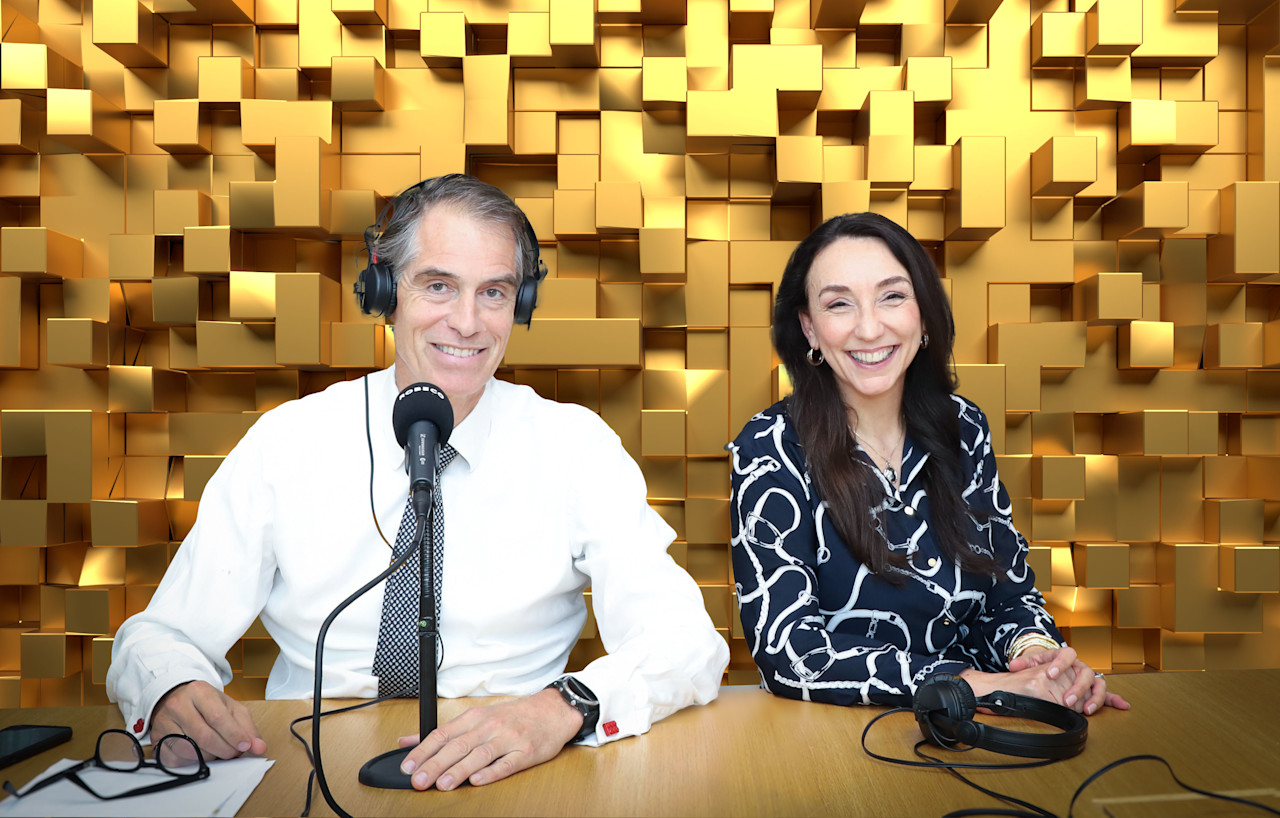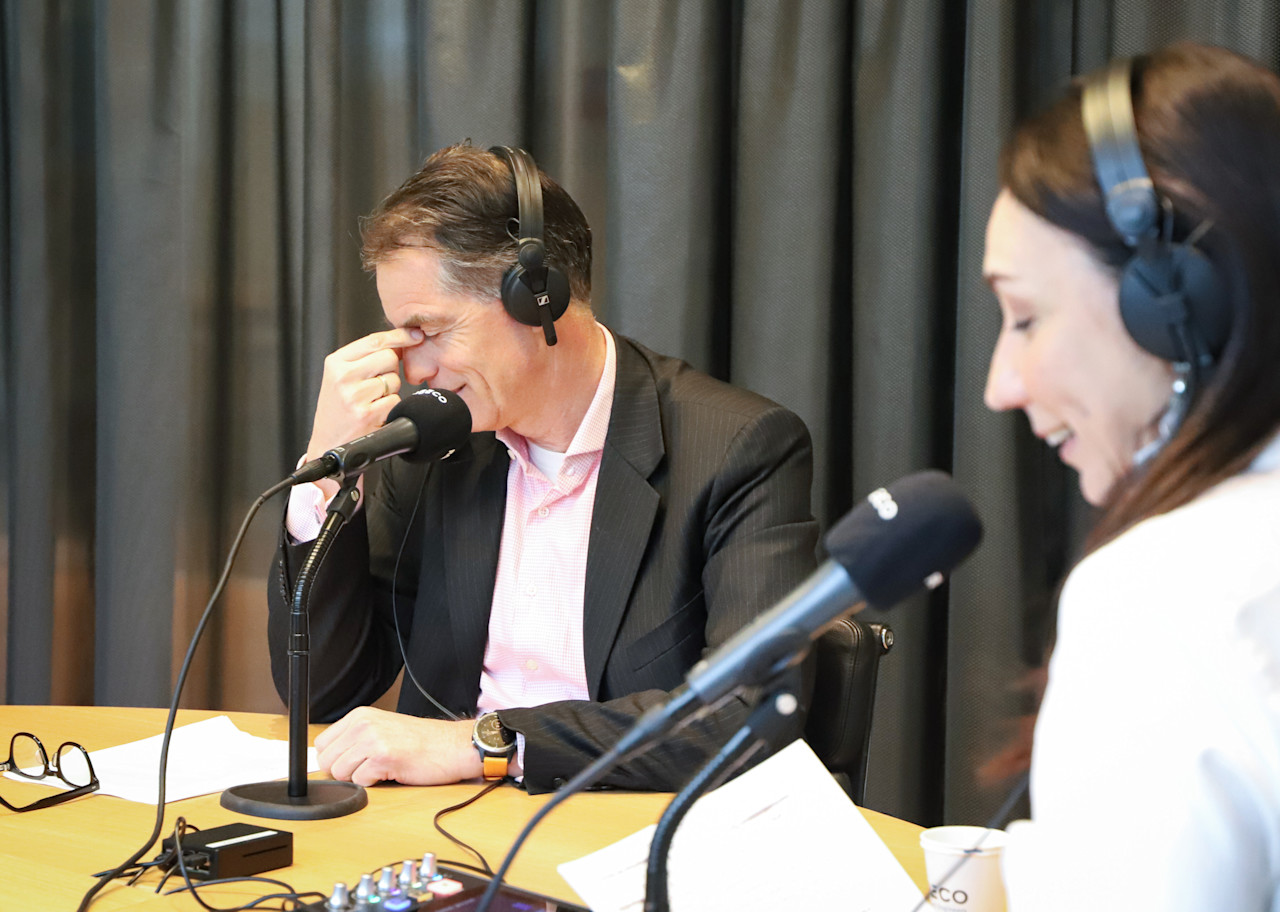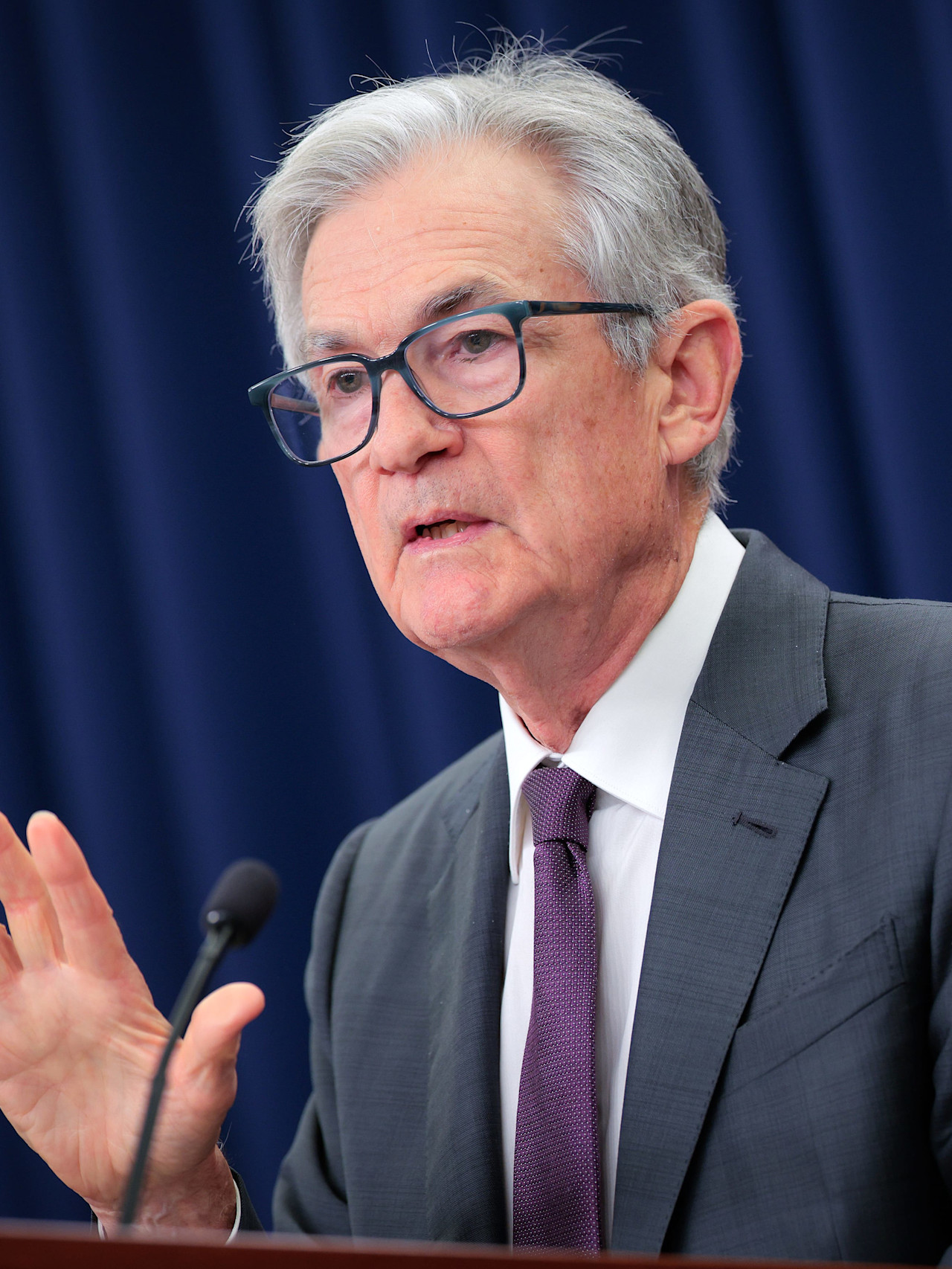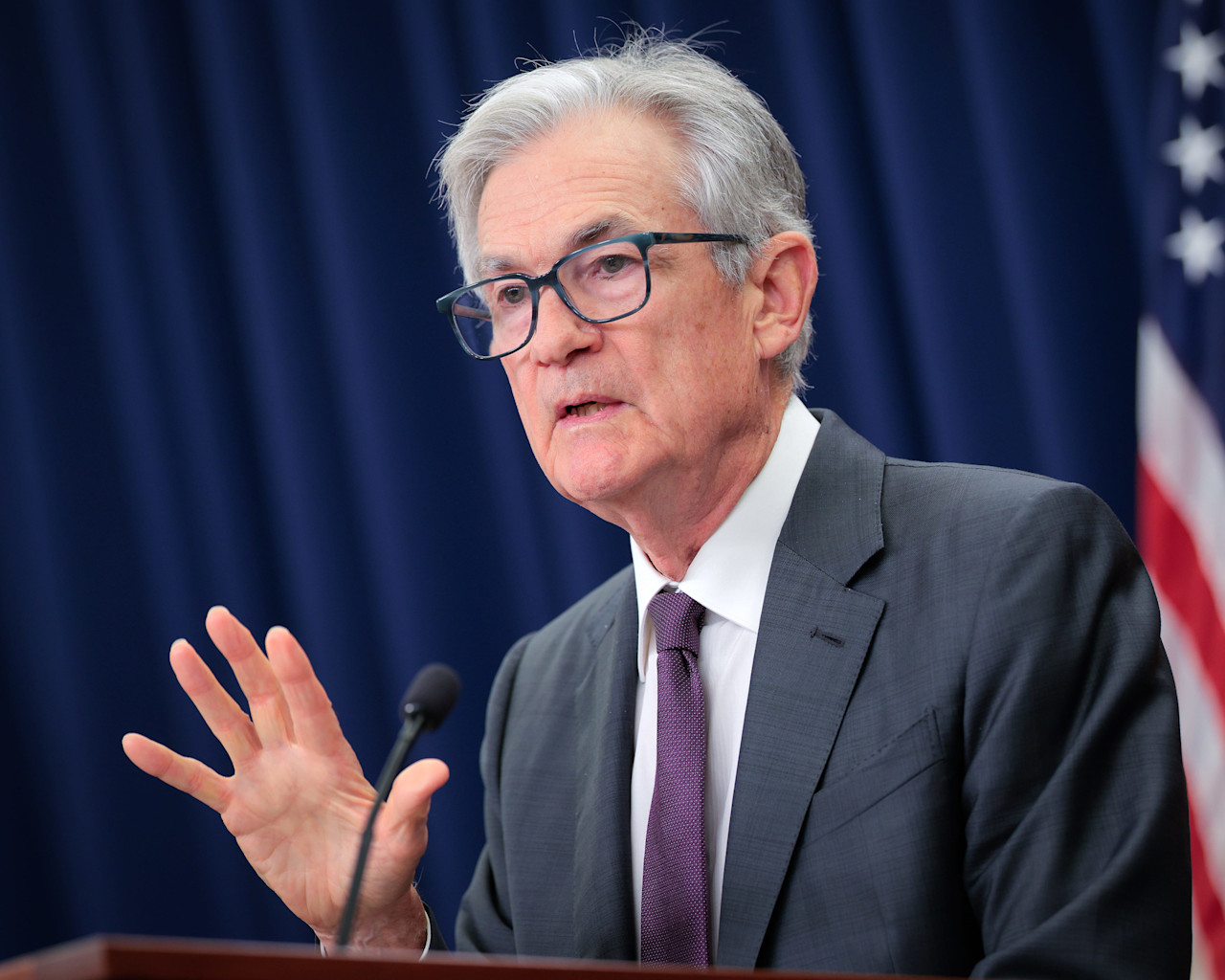


Podcast: Trump 2.0 is all about ‘shock and awe’
The first 100 days of Donald Trump’s return to the White House have been marked by sweeping change: executive actions, heightened trade tensions, and growing uncertainty seem to be the new normal. In this episode, we evaluate how these early policy moves by the new US administration are reshaping the global economic landscape, and what it all means for investors.
Summary
This podcast is for professional investors only.
Erika van der Merwe (EM): The first 100 days of Donald Trump's return to the White House have been marked by sweeping change. Executive actions, heightened trade tensions and growing uncertainty seem to be the new normal.
Welcome to a new episode of the Robeco Podcast.
EM: In this episode, we evaluate how these early policy moves by the new US administration are reshaping the global economic landscape and what it all means for investors. My guest for this is Mike Mullaney. He's Director of Global Markets Research Investing at Boston Partners. Welcome, Mike.
Mike Mullaney (MM): Hello, Erika.
EM: President Trump's first three months in office have been a wild ride. We've lurched from the US exceptionalism trade to investors now seemingly running for cover. What's your overall assessment at this stage of what's happened, Mike?
MM: Well, you've mentioned that, you know, obviously it's been a whirlwind of activity since Donald Trump has taken office back in January. He's issued already 130 executive orders over that timeframe. The next closest president was Joseph Biden, at 42 over the same timeframe. So he's almost tripled the amount of executive orders within his first, not even 100 days that he's been in office. Part of his ‘shock and awe’ basically theory of how he wants to govern the United States, in inundating people and the government in general with these executive orders. So it's been a whirlwind to say the least, and obviously reflected in the markets and in people's assessment as to what's going on.
EM: Yeah, and of course, the currency, the US dollar, has weakened sharply recently, reflecting these concerns around policy uncertainty and also the implied outlook for US economic growth, tariff policy and what we've seen in recent weeks and the significant consequences of the announcements, obviously on top of mind right now. But let's just take a step back. Let's tackle the US administration's policy more broadly. And I think among the very first steps taken were related to illegal immigration, with some very big wins early on in securing the US border. What should investors know about the ramifications of this policy, both good and bad?
MM: Well, if you think about the components of GDP, there are two components as far as GDP growth is concerned. It's the increase in your working age population, number one. And added to that is the productivity of that workforce. That is the equation for estimating what GDP growth is going to be. In the United States we've had very low working age population growth until more recently. The reason being is that since 2021, over 50% of our working age population growth has come from immigration, from foreign born workers. So, you know, basically what Trump is doing is more or less shooting himself in the foot. If he's going to decrease the immigration because it's been such a significant portion of the increase in our overall GDP growth because of the increase in the workforce. So that's one thing that's just kind of confusing and somewhat troubling to us, going forward is that, we'd have to have a significant rebound in productivity, which we may or may not get from AI, who knows. That's another entirely different question. But we may get an increase in productivity, which will help bounce off the decrease that we've seen in the working age population growth. Once again, deportation is going to be very expensive for the United States. It's going to cost billions of dollars to deport even 1 million illegal immigrants, if we can actually find 1 million illegal immigrants within the United States. And that's not even factored into really what the budget is for the United States going forward for 2025 and 2026. So these are once again, very expensive and probably very much growth-limiting, as far as GDP growth in the United States is concerned.
EM: So picking up the last aspect you mentioned there, the budget or government spending. So the US fiscus has been another major theme for the new US administration. Take us through the messaging on fiscal policy and the government's plans to reduce the fiscal deficit. We are well aware of DOGEs actions, but I'm sure there's much more to this. How achievable are these plans?
: I don't think they're achievable at all, quite frankly. DOGE, when Elon Musk first took over that entity, was projecting a savings of USD 2 trillion. That's now been whittled down to in the vicinity of USD 700 billion, they're looking for MMpotential savings right now. And to date, they haven't even come close to that. They're like USD 50 billion of savings right now. So they're nowhere near what their targets are. In general, if you look at the spending that's being planned right now by the administration, obviously, which is to increase spending mostly on weapons in the military, it's about a USD 1.5 trillion increase in the budget, of which there's really no offset as far as spending cuts of concern, right now the spending cuts are in the vicinity once again of about USD 700 billion. So as it stands right now, you know, President Trump thinks that tariff income is going to offset that differential between the USD 1.5 trillion in increased spending versus the, take a rough number, USD 750 billion of savings coming from government waste. I don't see tariffs plugging that number. I think tariffs are going to be somewhat of a disappointment as far as revenue is concerned. They're definitely going to be a disappointment as far as growth is concerned. And part of what Scott Bessent has said, the Treasury Secretary, is that we want to grow our way into a lower deficit. I just don't see that happening under the set of circumstances that have been portrayed to date right now by the administration.
EM: So picking up then on the crucial tariff policy, the very large US trade deficit has been one of the justifications by the administration for the escalation of tariff policy. You've also mentioned the motivation of it as a source of government revenues. What's your overall assessment of the approach taken? Clearly not a positive assessment. Things are just changing radically, it's difficult to read it. How could this affect the economy, financial markets and even geopolitics?
MM: So, you know, quite simply tariffs are taxes. Taxes are costs. Someone has to bear the weight of those increased costs. It's either going to be coming from the manufacturers, the wholesale distribution channel or the consumer. So someone's going to pay the piper if you want to maintain margins. Most likely it's going to be kind of a combination between margin cuts at the manufacturer level, as far as maintaining unit sales and at the same time inflationary for the final consumer. Like I said, tariffs, if you look back at the levels we've seen so far, we have obviously a 90 day moratorium right now on some of the tariffs. But if you look at the levels that Trump had proposed on Liberation Day, there were upward of 20-22% of GDP levels. And that is reminiscent of what we saw back in the 1930s with Smoot-Hawley. Smoot-Hawley was one of the reasons that we went into the Great Depression in the United States during the 1930s, because of the unwind of global trade and how global trade was severely impacted by the Smoot-Hawley terrorists that were present back in those that era. I'm not a proponent of tariffs. I think they work reasonably well on a product-by-product basis, maybe with steel and aluminum, but definitely not on a country basis, and particularly not at a 10% minimum. The expectation right now is that with a 10% minimum tariff on a country-by-country basis, as well as additional product tariffs, we're probably still going to be in the mid-teen level, as far as the actual tariff rate, someplace around 15%. That is going to be very onerous for global trade. I can guarantee that you're going to see a significant disruption in global trade based upon these tariffs. We saw a microcosm of this basically during the Covid period. And so this will be very much reminiscent of what we experience as far as supply chains disruptions that we saw during Covid, based upon what's going to happen as far as tariffs are concerned.
EM: Mike, are we missing something here in our understanding of the President's approach to imposing tariffs? Because I think even amongst his most ardent supporters, there's growing concern around this policy. Is there some other angle that could be at work here?
MM: Well, obviously that's always the bargaining chip. That always comes up as his ploy, that he's using tariffs as a bargaining chip to get more favorable administrative policies on a country-by-country basis relative to the United States. That's number one. But going back is that if you listen to what Trump has said, he's led the public to believe that it's the countries that pay the tariffs. That is absolutely 100% incorrect. The tariffs are paid by the importers. The importers are generally US companies that actually pay the tariffs. So while you're collecting money, you're not collecting money from per se China. You're collecting money from the importer of Chinese goods in the United States. He keeps on alluding to the fact that these countries are going to pay the tariffs. They do not pay the tariffs. They might pay as far as reduced units being sold into the United States. That might be one ploy that he has. But the tariffs are actually paid by the importers of the goods into the United States. So that's a fallacy that keeps on being played by President Trump. That is absolutely incorrect. Once again, we'll see what happens. I would imagine once again that you're going to see significant supply chain disruptions because, as we saw once again during Covid, you can't just turn a switch and have a brand-new supplier of a good into the United States from a company that you've been doing business with for years and years. There's just no real readily available alternative on a turnkey basis for many of these products.
EM: And presumably, you know, if this was the objective, it would take years, presumably to get this manufacturing base up and running in an efficient way.
MM: That's exactly correct. That's a really good point, Erika. So to build just the box of a medium-sized factory, just the box takes two years and USD 25 million. That's just a box. That's nothing inside the box. And if you have to make that obviously a sophisticated manufacturing entity, it's going to take longer than two years and well more than USD 25 million. You're talking hundreds of millions of dollars. I'll give you an example, too, as well, is that you can't expect that we're going to do a turnkey and go back to that manufacturing labor as a percent of our labor force is going to go back into the 20s. It's about, right now about 4%. We were in the 20s back in the 1970s, probably. I'll give you an example. Amazon has a distribution center in Charlton, Massachusetts, which is almost 3,000,000ft² in size. That's 64 acres. To run that, they run it 24/7, and they have 1,000 employees that are employed at that facility. There are 5,000 robots at that facility. So there are five robots to every single person. If you do the math on it, if they're running three 8-hour shifts, they're only employing 333 people per 8-hour shift to run a 64-acre facility. It's not a lot of labor. If we're going to be a manufacturing hub again for the world, it's not going to be with bodies. It's going to be with robots.
EM: The US’ relationships with China, Europe and others seem to be in flux. And this is really highlighted through tariff policy in particular, but also we're seeing this more broadly. For you, Mike, any surprises so far in this administration's handling of geopolitical relations and the consequent tensions that have arisen?
MM: The way I describe it, Erika, is that he's started economic warfare between friends and foes alike, to something that we haven't seen in over 100 years. So, as I mentioned earlier, as far as self-inflicted wounds, shooting yourself in the foot, he seems to be doing that sometimes almost on a daily basis.
EM: I'm trying to find the positive angle in this, Mike.
MM: There is no, right. As of right now, there is no positive angle in it. It's just, and like I said, we haven't really discussed the markets. The markets are telling you that right now, that this is not a positive. This is not a positive for economics. It's not a positive for asset returns.
EM: So speaking loudly and clearly, we are seeing markets as you said pricing in a rising probability of a US recession. Can you put numbers to that? What are your views on likely growth, inflation and unemployment? And also how is the Fed likely to react to this? And of course, this is another layer to the story because we see interwoven with all of this, is President Trump's most recent amplification of his criticism of Fed Chair Jerome Powell, and that he's been too slow in cutting rates.
MM: I keep the math really simple as far as the impact of the tariffs. And this is more based upon what he said once again on 2 April. We don't know what's going to transpire over the next 90 days, or less than that now, 80 days, as far as what the final outcome is going to be. But very simplistically, on a global basis, you want to decrease GDP growth by 1.5%, and you want to increase inflation by 1.5%. It's pretty well balanced between the two. That's on a global basis. Now individual countries will have different impacts. The US might have a different impact, but that's generically the impact that you'll see both on growth and inflation: 1.5% negative on growth, 1.5% positive on inflation. As far as unemployment, I would imagine that you'll see that creep north of 5% within the United States within a relatively short span of time. We start to see obviously, the DOGE cuts come in, which is delayed somewhat because we don't have the final numbers because they're still on severance pay, those government workers. And so as such, we don't see those numbers creeping into the unemployment statistics quite yet. But you're seeing an increase in layoffs. And what causes recessions is not people losing jobs. This is what another misnomer is within the marketplace. That doesn't help, obviously, with people losing jobs. It's that jobs aren't available. There are no new jobs to be had. That's where the problem is, is that there's no job creation. And it's exacerbated by people that lose their jobs, but they can't find jobs because there is no job creation. So right now, job creation is slowing to a halt. And that's what you have to watch for going forward. I think 5% is going to be kind of a trigger point for the President, but also potentially, as you mentioned, for the Federal Reserve Board and Jerome Powell. As of right now, they're focused on inflation. They jump back and forth between their two mandates, which is stability of jobs and stability of inflation. It's full employment and stability of inflation. Right now, they're focusing back on inflation. This is what Jerome Powell said last week because of this uncertainty regarding tariffs, they know that it's going to be inflationary. They don't know yet the extent it's going to cause an increase in the unemployment rate. But at that 5% number you may see Jerome Powell switch back to unemployment being the driver of Fed policy as compared to inflation right now.
EM: And Mike, the political aspects interwoven in this, the pressure on Jerome Powell possibly to resign or perhaps President Trump using some power unknown to the markets to in fact dismiss Powell.
MM: So this is you know reminiscent of what we saw back in Trump 1.0. He went after Powell in his first administration as well. So it's not surprising that he's going after him right now. If he were to try to dismiss Jerome Powell, which he does not have legal authority to do, it'll continue to put pressure once again on the markets, most particularly the bond market, because Jerome Powell has not been, you know I wouldn't give him an A grade for his performance, in the last 4 to 6 years that he's been on board. He's done an incredible job as far as keeping prices relatively stable. Covid was obviously a giant curve ball that he had to deal with. But he's done, I guess you could say a credible job. If his stature were to be diminished, you would see the impact instantaneously in the bond market. The bond vigilantes, I guarantee, would turn on the 10-year and 30-year Treasury in rapid fashion as far as demanding higher risk premiums for those securities.
EM: And of course, even before this tension between Trump and Powell intensified, we saw those bond vigilantes firing off their first shots, with the US Treasury yields spiking. So just creating this fear that, in fact, after all, US Treasuries are not necessarily a safe haven under all circumstances.
MM: Yeah, it was interesting. That was really just once again, a microcosm of potentially what could happen. That was basically hedge funds unwinding levered basis trades that caused the disruption ten days ago, whenever it was. This is something different. The bond vigilantes, you remember, in the United States the vast majority of them are Republicans. They voted for Donald Trump. They want his policies to work. They're dismayed right now that they're not working to the extent that they thought when he was elected. They will give Trump the benefit of the doubt for a period of time, but when their capital is at risk, they will turn on the president and they will turn on the bond market, and they will sell securities in order to protect capital. That's just the United States. It's now gone global. There are now global bond vigilantes waiting to do the same thing. So once again, we may get a reprieve for the next 80 days until we see what happens as far as the tariff situation is concerned. But I can pretty much guarantee that the bond vigilantes are waiting for some demonstrable sign that either Scott Bessent or Kevin Warsh are having a positive impact on Trump's policies going forward. And if they don't find that they're seeing that, they will turn on the bond market.
EM: In the meantime, what's happening in the equity market, clearly we're seeing weakness there, concerns about economic growth in the US and some sectors performing worse than others. What are you seeing as a value investor? Presumably you're seeing some opportunities here.
MM: Since his election, the S&P 500 is down about 13.5%. In Trump 1.0 through that timeframe, it was actually up almost 4%. So we've had a dramatic turnaround in difference as far as what the market performance has been under Trump 2.0. We've had, as you mentioned earlier, a dramatic weakening of the dollar. The dollar is going to be the acid test for the report card on American exceptionalism, which is now under attack. I would imagine on a near-term basis, we will continue to see weakness in the dollar. On a longer-term basis, we probably continue to see weakness in the dollar because of the dual deficits, our current account deficit in the United States and our fiscal deficit. So the dollar is probably going to have a tough ride on a foreseeable future for any gains. The good news, if you want to call it that, regarding a weakening dollar is actually a positive for Boston Partners being a value equity-based investor. We're all value all the time. Historically, a weakening dollar has led to outperformance of value stocks over growth stocks. The R square of that, not the correlation, is 0.72. So there's a very high correlation between a weakening dollar and a strengthening value trade in equities. And that's a positive that we see going forward. We just hope that there's a positive sign as far as the returns are concerned. And not a negative sign of returns, where value just winds up winning because it loses less. It'd be nice if value wins by gaining more.
EM: Right. Then by sector, just remind us on the value spectrum of things, which sectors then are looking promising?
MM: If you think about it, we haven't really seen a significant move on deregulation yet. We've seen a lot of executive orders and they've been not necessarily directed specifically at industry levels. We would imagine that the banking sector is the one sector in finance in general, will be the sector that will benefit from any increase in deregulation coming from the Trump administration. So we have a positive outlook for finance in general, and banks should do well under that. The biggest thing that we came across was that they supposedly were going to eliminate the necessity to put risk capital aside to hold Treasury bonds. That would be huge, because that would free up a lot of money for banks to make loans and do other things as far as pro-business growth is concerned. It hasn't happened as of yet, but that was something that was basically batted around by the Trump administration. So once again, we're looking to finance and in general banks. Health care is inexpensive. We don't know what the tariffs are going to be quite yet on health care. That still is pending right now. We originally thought there was going to be no tariffs on pharmaceuticals. That may not be the case as Trump has come back and said that he is going to tariff at least certain products within the pharmaceutical industry. But pharmaceuticals in health care in general, have been a defensive holding and a stable holding and we think that's a place to be. If you're looking for deep value, you'd have to go to energy. Energy's trading at ridiculously low P/E multiples relative to other portions of sectors and sectors of the market in general. The only problem with energy right now is that with Brent oil trading at around USD 64-65 a barrel, you're at break-even cost for developers. Trump has wanted to say, you know, ‘drill, baby drill’. He's not going to get ‘drill, baby drill’ unless oil is north of USD 65 a barrel, because it will be not productive for companies to drill. When it was at USD 62 a barrel, they'd be losing money if they were drilling, especially in the shales, the middle part of the United States and even offshore, is going to have to have a break-even point higher than USD 65 a barrel. But those sectors, I guess, generically look attractive to us. Whereas once again, energy is the deep value play within all the sectors in the S&P 500.
EM: Right. And of course, Mike, earnings season is underway right now. And of course the numbers that are coming out would proceed these dramatic events that have taken place. But in terms of the guidance statements from the CEOs and CFOs, what would you be looking out for now?
MM: Well, we've seen generically, as the earnings season progresses, expectations usually come down during the earnings season. We started this year with the Q1 earnings expectations north of 12% growth on a year-over-year basis. We're down to about 9% right now on a year-over-year basis expectations of growth. The blended rate right now, and we don't know everything, that's you know, because they haven't changed… we're not even halfway through the earnings season yet. I'm guessing we're going to come in some place sub-9% as far as earnings growth is concerned. Usually what happens is that companies knock down their expectations so they can beat their expectation when they actually announce. I'm guessing the upside surprises is going to be muted based upon the fact that the tariff overhang is going to cause a lot of CEOs to be much more cautious about their expectations going forward. I still see a positive for Q1, but a wild card for the rest of the year.
EM: Mike, a bit of a strange question. If you were called in right now as an economic and financial advisor to the Trump administration, what are the top three things that you would recommend right now to turn things around, but not only to have an immediate positive effect on financial markets, but to have medium- to long-term positive consequences for the US economy?
MM: Well, first I would roll back the tariff situation completely. I would not have a 10% minimum. I would do it probably on a product-by-product basis only. And I'll give you an example of that, why some of the tariffs make no sense whatsoever. Take Indonesia. Indonesia's primary export is palm oil. It's the largest producer of palm oil in the world. We have a very large deficit with Indonesia because we import a lot of palm oil, but we don't sell a lot of things to Indonesia. The reason being is the average per capita earnings in a year for the average Indonesian is USD 4,000. The average income of the average American is USD 43,000. Someone who is making USD 4,000 a year in Indonesia is not going to be in the market to buy a new Tesla, and we're not going to be shipping Teslas to Indonesia to offset the trade deficit because of their palm oil. So once again, it makes very little sense to me to put a, I think it's a 34% tariff on Indonesia when it's exporting palm oil. We're not going to make palm oil in the United States, and we need it for cooking, obviously. A lot of restaurants still use palm oil in their cooking preparation. So I would just eliminate this 10% minimum across the board. And I would do it on a product-by-product basis where there are significant deficits as far as what we send in to a country versus what we take out of a country on a product-by-product basis. The best examples are steel and aluminum. I can completely understand putting a tariff on Chinese steel because it's a subsidized industry in China, and we don't necessarily subsidize the steel industry in the United States. So yes, I can see putting a tariff on Chinese steel or Chinese aluminum, or even Canadian aluminum, but I can't see across the board a 10% tariff on every single country, irrespective of what the makeup is of our deficit with them. So that's the first and foremost thing.
EM: And two other quick wins that you could achieve?
MM: I believe the Fed independent, back off Jerome Powell, that's not a good thing. It would be that. And then once again, immigration. I would go lighter on immigration. You want to have people who are not coming in illegally, but you want to basically get the borders set up that you can let legal immigrants come in and apply for green cards or basically work in the United States, but you don't shut the border down completely because once again, you're going to cut probably more than 50% of the growth rate of the labor force if you do that.
EM: So, Mike, you've taken us through your assessment of the US administration's policy related to international relationships, immigration, fiscal policy, deregulation, industrial policy, its approach to central bank policy. Given all of that, the good, the bad and the ugly, at the 100-day mark, what grade would you give the Trump administration?
MM: I would break it out into two pieces, and I would probably fall along the line of what the polls are saying as far as President Trump's performance is. So from RealClearPolitics his overall approval rating is 46% thinking he's doing a good job. Over 50% think he's doing a poor job. So it's a -4% roughly as far as his overall job approval rating. I would put that in the C- category, right now. But if you look at it purely on economics, there's a much bigger gap. Economics, his approval rating is about 43%. His disapproval rating is over 54%. There's almost a 12% gap between the two. I would give him on economics a D or a D-. In Trump 1.0, there were two report cards that he looked at. One was his approval rating and two was the stock market. That’s both very negative right now. He’s said he's not really watching those. That's a bunch of baloney. If he continues to see his approval rating plummet and his disapproval rating soar, and the stock market continues to go down and we get closer to the mid-term elections where many Republican seats will be at risk, I think you may see a sea change at that point in time because he will have to change. Otherwise he will wind up losing both houses of Congress, the House of Representatives and the Senate. If he does that, he will be hand-strapped for the final two years of his administration and his time in office. And I don't think he wants to get to that point.
EM: Indeed. And that goes back to the key point of the bond markets, the Treasury market and equity markets being an important disciplining factor to this administration.
MM: 100% correct.
EM: Mike, thanks so much for your insights. It's been great talking to you.
MM: Thank you Erika, be well.
EM: And thank you to listeners. If you've enjoyed this episode, please subscribe and share the podcast link within your network. Stay tuned for more market perspectives in our next episode. This financial markets podcast and Robeco’s investor-themed podcast are available on all major podcast platforms and on the Robeco website. Until next time.
Thanks for joining this Robeco podcast. Please tune in next time as well. Important information. This publication is intended for professional investors. The podcast was brought to you by Robeco and in the US by Robeco Institutional Asset Management US Inc, a Delaware corporation as well as an investment advisor registered with the US Securities and Exchange Commission. Robeco Institutional Asset Management US is a wholly owned subsidiary of ORIX Corporation Europe N.V., a Dutch investment management firm located in Rotterdam, the Netherlands. Robeco Institutional Asset Management B.V. has a license as manager of UCITS and AIFS for the Netherlands Authority for the Financial Markets in Amsterdam.
Available on


Tune in now – Robeco podcasts
Important information
The contents of this document have not been reviewed by the Securities and Futures Commission ("SFC") in Hong Kong. If you are in any doubt about any of the contents of this document, you should obtain independent professional advice. This document has been distributed by Robeco Hong Kong Limited (‘Robeco’). Robeco is regulated by the SFC in Hong Kong. This document has been prepared on a confidential basis solely for the recipient and is for information purposes only. Any reproduction or distribution of this documentation, in whole or in part, or the disclosure of its contents, without the prior written consent of Robeco, is prohibited. By accepting this documentation, the recipient agrees to the foregoing This document is intended to provide the reader with information on Robeco’s specific capabilities, but does not constitute a recommendation to buy or sell certain securities or investment products. Investment decisions should only be based on the relevant prospectus and on thorough financial, fiscal and legal advice. Please refer to the relevant offering documents for details including the risk factors before making any investment decisions. The contents of this document are based upon sources of information believed to be reliable. This document is not intended for distribution to or use by any person or entity in any jurisdiction or country where such distribution or use would be contrary to local law or regulation. Investment Involves risks. Historical returns are provided for illustrative purposes only and do not necessarily reflect Robeco’s expectations for the future. The value of your investments may fluctuate. Past performance is no indication of current or future performance.
























